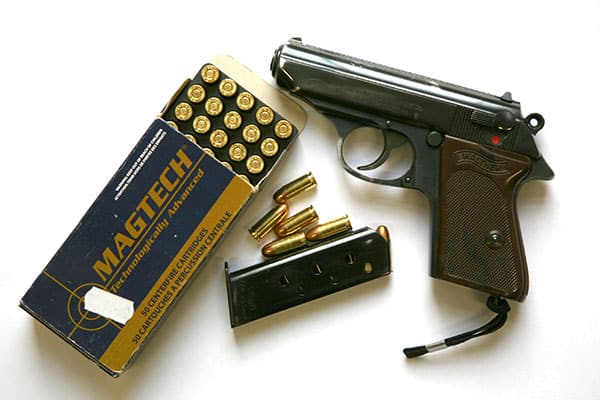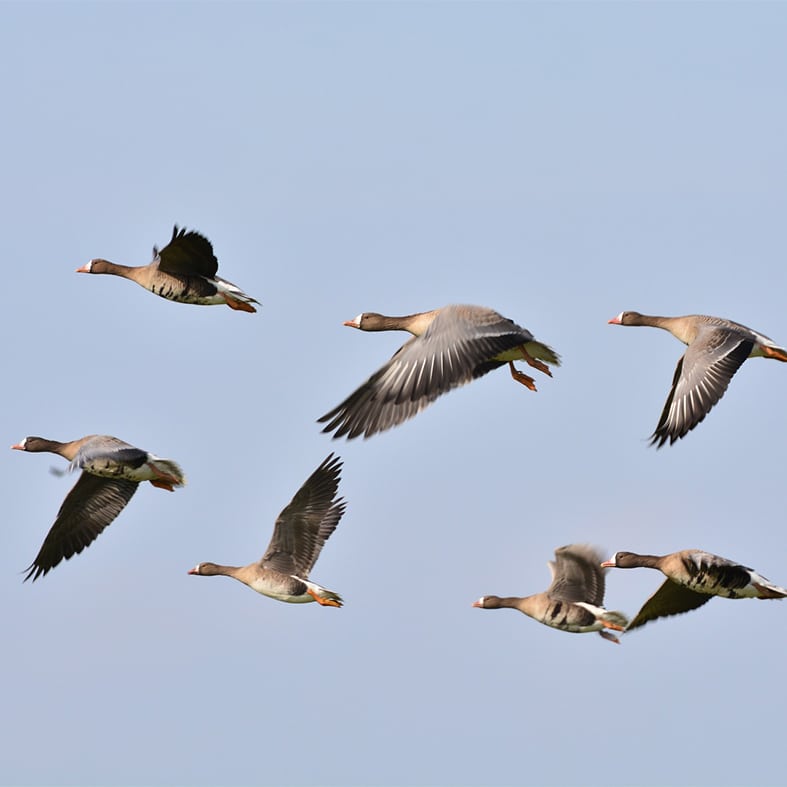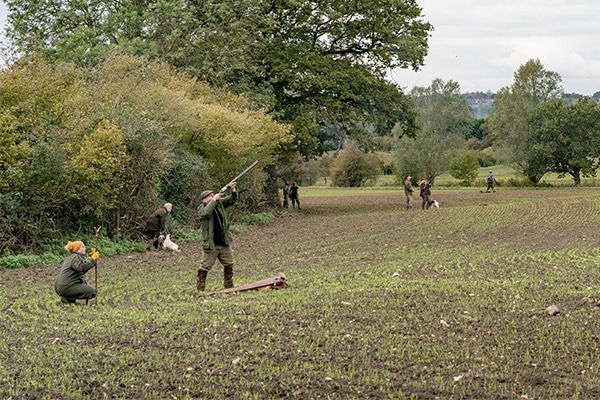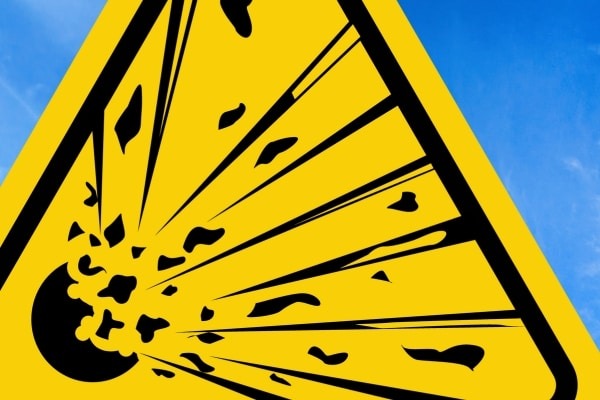
Handguns for humane dispatch
Information on the use of handguns for humane dispatch in Scotland, England and Wales, including legislation and licence applications.
Get information on the legal shooting season for mammals and birds in the UK.
Apply for funding for your project or make a donation today
Comprehensive information and advice from our specialist firearms team.
Everything you need to know about shotgun, rifle and airgun ammunition.
Find our up-to-date information, advice and links to government resources.
Everything you need to know on firearms law and licensing.
All the latest news and advice on general licences and how they affect you.


Home » Firearms » Firearms use » Semi-automatic shotguns and rifles for live quarry shooting
This page aims to set out what species can be killed or taken using a semi-automatic shotgun or rifle.
It is important to know the legislation that covers the use of firearms, how it works for dealing with the police as well as practical issues when faced with vermin problems in the field.
The table below summarises what can be shot with what type of firearm and the rest of the sheet investigates the detail of the legalities. The table gives information for groups of species such as ‘game’.
A full list of mammalian and avian pest species that can be shot in each country of the UK and general licence information can be found on the BASC website (www.basc.org.uk).
| Species | ‘Standard’ semiautomatic guns held on a Section 2 shotgun certificate | ‘High capacity’ semi-automatic guns held on a Section 1 firearm certificate |
| ie. semi-automatic shotguns of which its magazine holds no more than 2 rounds, and; any semi-automatic rifle whose magazine holds no more than two rounds (in the UK only .22 rim fire is permitted) | ie. semi-automatic shotguns of which its magazine holds more than 2 rounds, and; semi-automatic rifles of which its magazine holds more than two rounds (in the UK only .22 rim fire is permitted) | |
| Ducks and Geese | Yes | No |
| Game birds | Yes | No |
| Avian pest species specified in the general licences issued for each country | Yes | Yes |
| Mammals | Yes | Yes1 |
1 With the exception of Irish hare and brown hare in Northern Ireland
The legislation allowing which species can be taken with semi-automatic firearms is the 1981 Wildlife and Countryside Act (referred to as WCA) for England, Wales and Scotland and the Wildlife (Northern Ireland) Order 1985 (referred to as WO). They are broadly similar and both govern what species we can shoot.
Birds and mammals are treated separately within both Acts so we will look at birds first. Bird species and semi-automatic firearms Both Acts “prohibits the killing or taking of wild birds by any automatic or semiautomatic firearm” (WCA Part 1, section 5, (1), c, iii and WO Part II, section 6, (1), c, iii).
The Acts define automatic or semi-automatic firearms as follows: (WCA Part 1, section 27 and WO Part II, section 3) “automatic firearm” and “semi-automatic firearm” do not include any firearm the magazine of which is incapable of holding more than two rounds. Therefore, the Acts prohibit the killing of any wild bird with a semi-automatic firearm with a magazine capacity greater than two rounds.
However, there is an exception which permits their use for the birds listed on the general licences. These species are often thought of as the ‘pest’ bird species. More detail on this is given in the next section.
In addition, the definitions of automatic and semi-automatic firearms in the WCA and WO have never been tested. It BASC’s view that only firearms that are automatic (those that fire more than one round for each depression of the trigger and are prohibited in the UK by the Firearms Acts) or semi-automatic ( self-loading action types; semi-automatic rifles are restricted by the Firearms Acts to .22 rimfire calibre in the UK, shotguns of this nature are unrestricted) whose magazine contain more than two rounds are included in the definition.
Therefore, firearms which use another reloading system (bolt or lever action for example) and have a magazine capacity over two rounds are not included in the definition and so could be used to shoot all the bird quarry species. However, it may prove difficult to gain a condition on a firearms certificate to shoot game or waterfowl with such a firearm and providers of shooting opportunities may not permit their use.
The general licences and their impact on species that can be taken with semi-automatic firearms. Most people are aware that semi-automatic firearms with magazines capable of holding more than two rounds may be used for controlling certain pest species such as wood pigeon. The reason is that the WCA and WO allow licences to be granted that override previous sections of the Acts.
The result is that a series of licences referred to as the “General Licences” are issued by Natural England, The Welsh Assembly, The Scottish Executive and Environment and Heritage Service (Northern Ireland). These licences allow authorised people (ie. you have permission to shoot over the land in question) to shoot what are regarded as the avian pest species such as pigeons and members of the crow family and certain seagulls.
Certain licences permit the use of automatic or semi-automatic firearms, as defined by the WCA and WO, to kill or take these species. It is vital that all shooters are familiar with the species listed on these licences, the purposes of the licences and the terms and conditions that we must comply with in order to shoot legally.
The licences are issued annually and can change. Up-to-date information can be found on the BASC website about the current licences and we would advise you to read this if you are not familiar with them.
Mammal species and semi-automatic firearms The Acts (WCA Part 1, section 11, (2), c, i and WO Part II, Section 12, (2), c, i) restrict the use of automatic and semi-automatic firearms, as defined by the Acts, for the mammals included on Schedule 6 of the Acts. The vast majority of these are not relevant to the sporting shooter with the following exception. In Northern Ireland the WO lists brown hare and Irish hare on Schedule 6 so these cannot be taken.
There are no other additional restrictions on shooting mammals with automatic and semi-automatic firearms whose magazines can hold more than two rounds in either Act. Therefore, it is legal to kill all sporting and pest mammalian species with a semi-automatic firearm whose magazine can contain more than two rounds with the exception of brown and Irish hare in Northern Ireland.
The interpretation in the WCA and WO of whether a magazine of a firearm is “incapable of holding more than two rounds” has never been tested.
We know that permanent reductions in magazine capacity are accepted if waterfowl or game are the chosen quarry. Whether temporary restrictors for magazine capacity (magazine plugs or two-round detachable magazines) is legal is not clear as a court has not been asked to clarify this matter. Therefore, a permanent magazine restriction is recommended.
The Home Office document “Firearms Law” – ‘Guidance to the Police 2002’ – states in chapter 13 (good reason to possess a firearm):
13.18 Self-loading shot guns (semi-automatic is defined in section 27 of the Wildlife and Countryside Act 1981 as holding more than two cartridges in the magazine and applies only to large magazine shot guns (and .22RF)) may be used to shoot certain pest species under the terms of a licence from either Natural England, the Welsh Government or the Scottish Executive Environment and Rural Affairs Department (SEERAD), but is applicable to avian species only (the general licences are applicable to avian species only, not that shotguns are applicable to avian species only).
Large magazine shotguns may be required to deal with serious pest problems with wood pigeon or corvids (rooks and crows). Unfortunately, due to film and media coverage the multi-shot shotgun has been demonized and now many police forces regard these firearms as unnecessary and dangerous.
The benefit of large capacity shotguns is simply added capacity when dealing with infestations of birds, eg. flighting into crops.
The 1988 Firearms Amendment Act came about as direct result of the Hungerford massacre and changed large capacity shotguns to Section 1 status. The perpetrator of the horrendous crimes did not use a multi-shot shotgun, but nevertheless the government acted to control them. The stigma linking that event and this type of firearm is still present, but as the Home Office guidance reminds people, each case must be determined on its merits.
All you need is ‘good reason’ to possess such a gun, in essence you will have to justify why you require four or five shots instead of three to deal with pest species. Additionally, it is worth noting that Natural England and other government agencies recognise the benefit of large capacity shotguns in pest control and have built specific exemptions into their licences for these guns to be used to control avian pest species.
When applying for a Section 1 shotgun or any other firearm for pest control, we advise that you clearly identify your requirement to control any pest species.
With regards to avian pests, ensure you select the appropriate general licence for your needs. The purposes for which they are granted are listed at the top and must relate to your requirement.
It is imperative that you adhere to the terms and conditions specified within each licence and that you are satisfied that other methods are either ineffective or impractical first before shooting commences.
You do not have to apply for general licences or carry them, but to have a copy with you would help you demonstrate your knowledge and understanding as well protect your position if questioned during your application for a firearm, but more importantly in the field!
Some police forces will inspect land to ascertain the extent of the pest problem. This is far from satisfactory as birds may not always be present during their visit, or at certain times of the day.
Usually, inspections are carried out in the same way as for rifles. Naturally shotguns are very different and their range is far less than any rifle.
In our view a land inspection to ascertain whether the land is safe to use that type of firearm is a misuse of time where bird shot is being used. The police do not carry out land checks for Section 2 shotguns; the difference between Section 1 and 2 shotguns is purely cartridge capacity of the firearm, which in itself does not make pest control any more hazardous.
A standard condition (below), as printed in appendix 3 of the Home Office guidance 2002, is usually applied to a firearm certificate where avian species are involved and control is in connection with general licences issued by government:
The ‘?calibre’ SMOOTH-BORE GUN shall be used for SHOOTING BIRDS in accordance with the purpose, terms and conditions of the general licence currently issued by Natural England/The Welsh Assembly Government/SEERAD under the provisions of THE WILDLIFE AND COUNTRYSIDE ACT 1981.
If you wish to utilise your shotgun for other additional species such as rabbits and squirrels the following condition can be applied:
The ‘?calibre’ SMOOTH-BORE GUN and ammunition shall be used for shooting vermin and ground game and for zeroing on ranges, or land deemed suitable by the chief officer of police for the area where the land is situated and over which the holder has lawful authority to shoot.
The words in italics may be omitted once the certificate holder has demonstrated competence. There is no set time for this and each case should be considered on its individual merits.
Some forces are known to be restrictive and condition Section 1 shotguns to avian species, only thus preventing other vermin such as rabbits or squirrels being taken in the course of avian pest control. Home Office guidance directs other species to be added to conditions in addition to the primary reason, eg. avian species.
The condition above allows you to deal with all reasonable eventualities, instead of having to carry a secondary firearm or to make another visit to land because a condition prevents you from engaging in collective pest control with your Section 1 shotgun.
It is also important to be aware that it is a criminal offence not to comply with the conditions specified on a firearm certificate. You may even find that your firearms are prohibited by certificate conditions from being used for pest control, even though it is suitable and not a prohibited method in the WCA or WO.
If you are in any doubt as to the meaning of your certificate conditions or you experience any licensing problems, please contact the BASC firearms department on 01244 573 010.
There are many people who control vermin with standard two-shot shotguns and have never found it necessary to carry out vermin control with a multi-shot shotgun. That may be the case, but the experience of another person does not constitute a valid reason for a chief officer to refuse an application.
This is supported by paragraph 13.6 of the Home Office Guidance: “Most firearm certificate holders possess firearms for reason of their profession, sport or recreation, and may properly wish to exercise discretion as to what types of firearms they chose for these purposes.”
If an application was refused on the grounds of the opinion of another person who had not found it necessary to use a firearm for the purpose for which the application had been made, then this would place the chief officer in conflict with settled law. He/she would be viewing the application from the standpoint of an objector.
Information about Section 1 shotguns for practical target shooting can be found on the BASC website (www.basc.org.uk) from the Firearms pages.
Got a question? Email us on firearms@basc.org.uk or call 01244 573 010.
© BASC June 2023

Information on the use of handguns for humane dispatch in Scotland, England and Wales, including legislation and licence applications.

Read about shooting agreements, permissions and consents, including links to download template documents.

Succinct advice on the law surrounding the storage of civil explosives in the UK, including requirements for record-keeping.
Sign up to our weekly newsletter and get all the latest updates straight to your inbox.
© 2025 British Association for Shooting and Conservation. Registered Office: Marford Mill, Rossett, Wrexham, LL12 0HL – Registered Society No: 28488R. BASC is a trading name of the British Association for Shooting and Conservation Limited which is authorised and regulated by the Financial Conduct Authority (FCA) under firm reference number 311937.
BASC Direct Ltd is an Introducer Appointed Representative of Agria Pet Insurance Ltd who administer the insurance and is authorised and regulated by the Financial Conduct Authority, Financial Services Register Number 496160. Agria Pet Insurance is registered and incorporated in England and Wales with registered number 04258783. Registered office: First Floor, Blue Leanie, Walton Street, Aylesbury, Buckinghamshire, HP21 7QW. Agria insurance policies are underwritten by Agria Försäkring.
If you have any questions or complaints about your BASC membership insurance cover, please email us. More information about resolving complaints can be found on the FCA website or on the EU ODR platform.